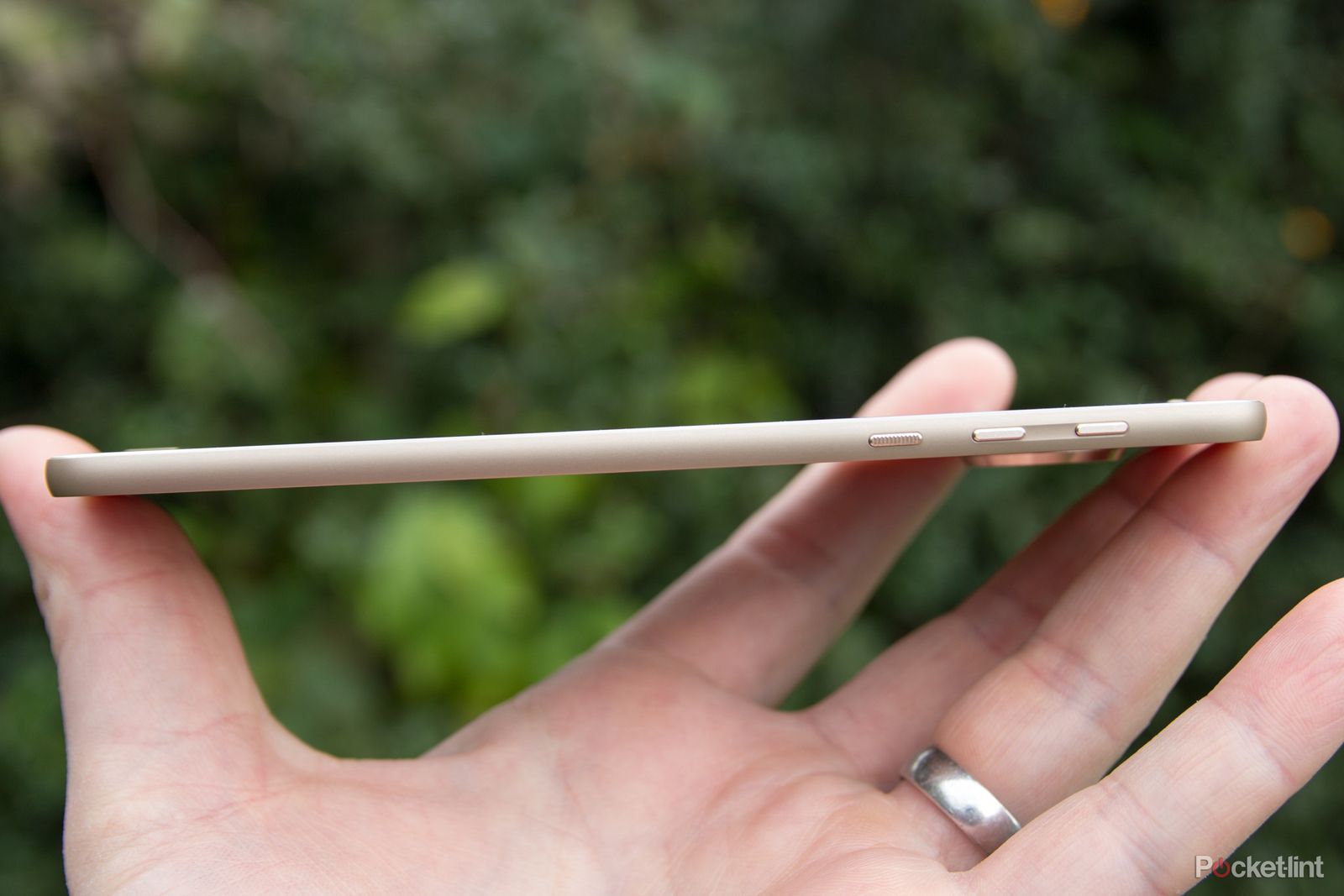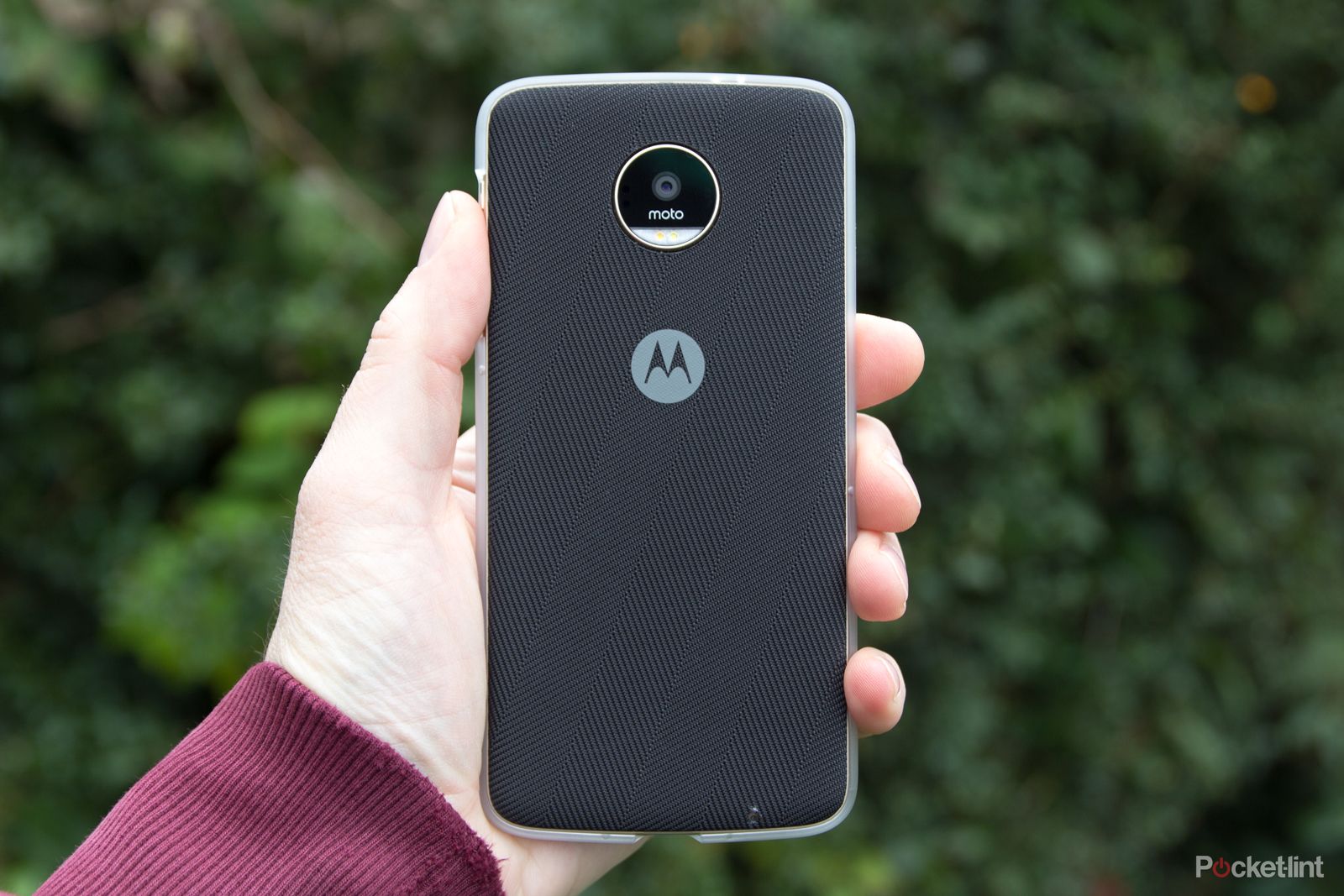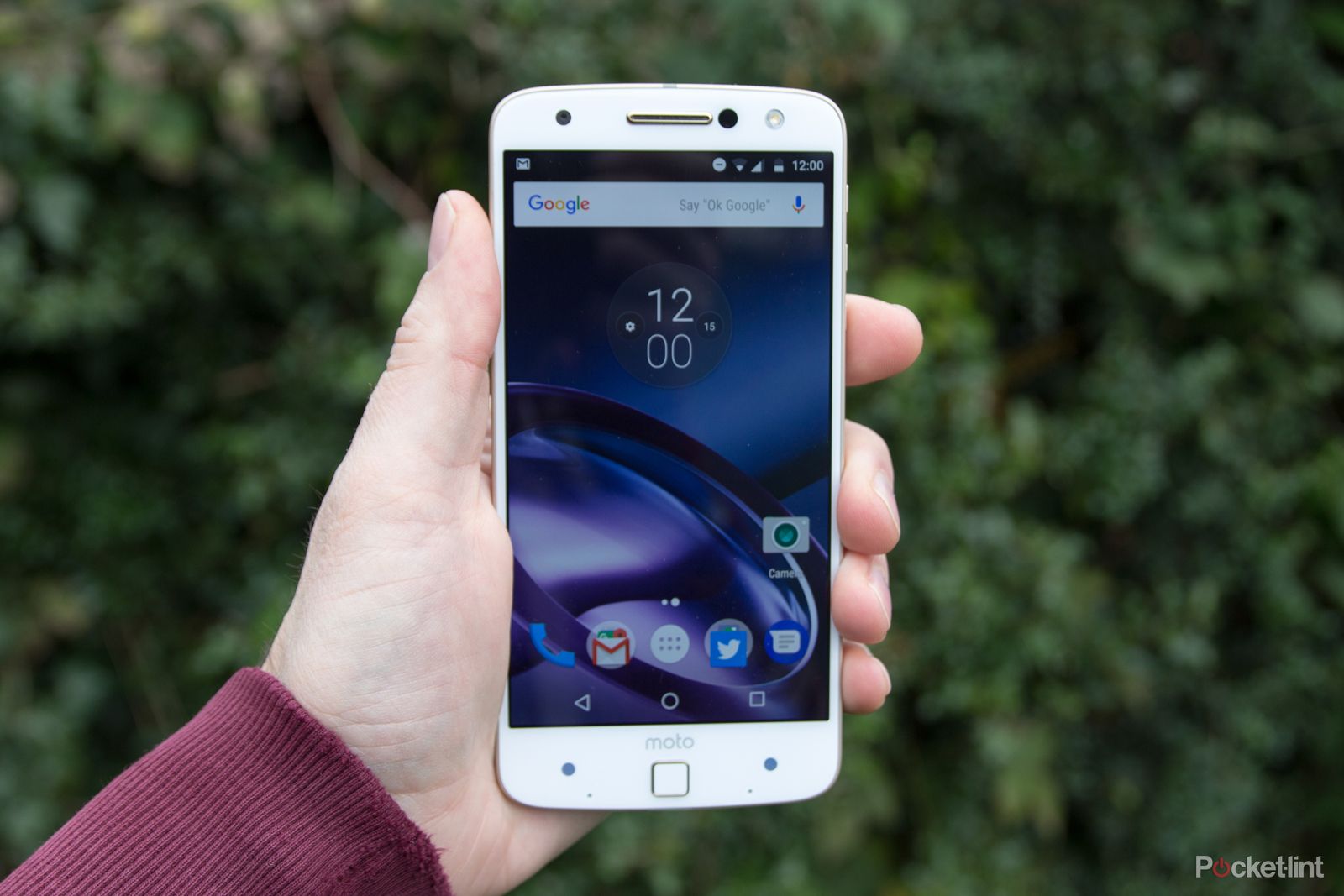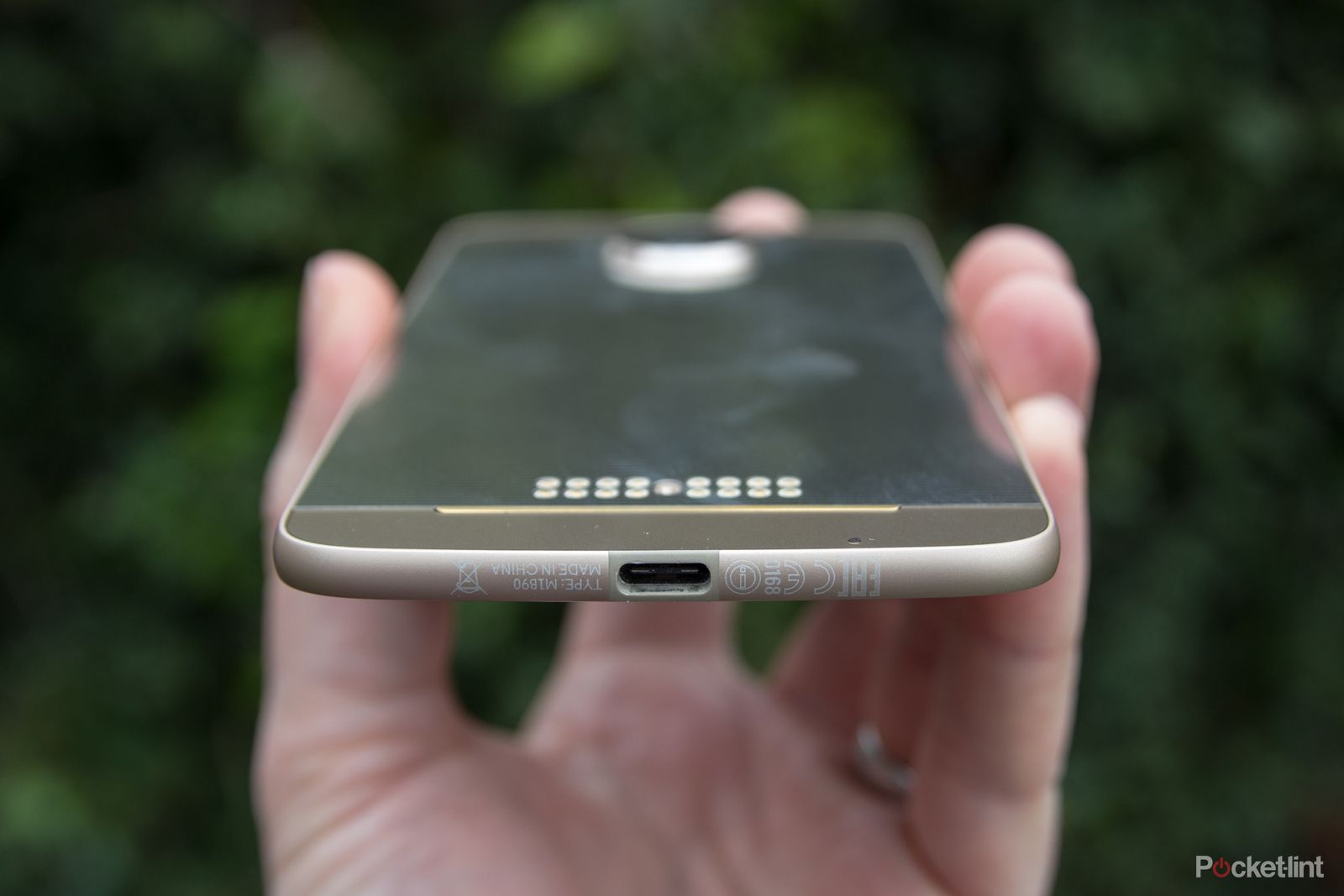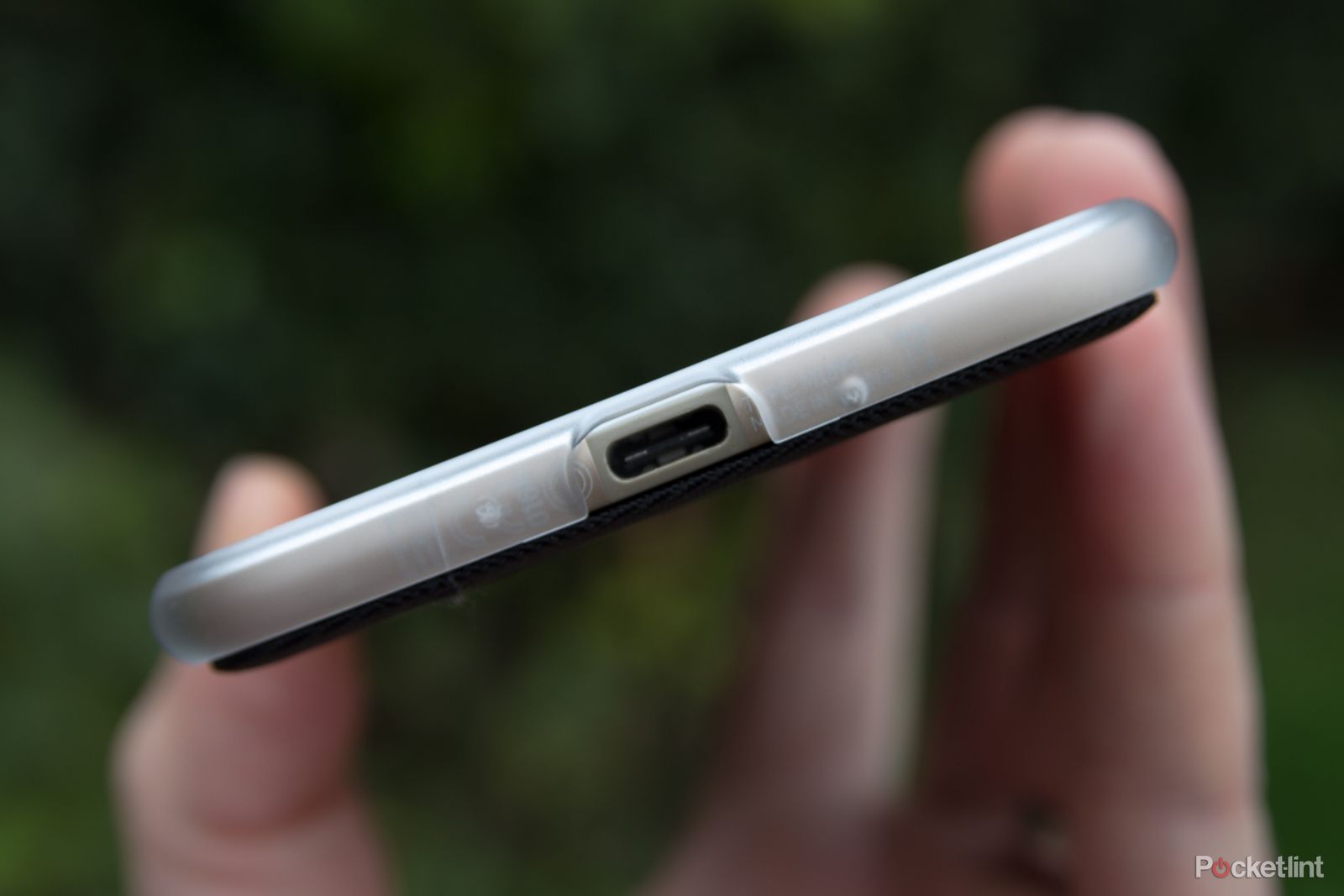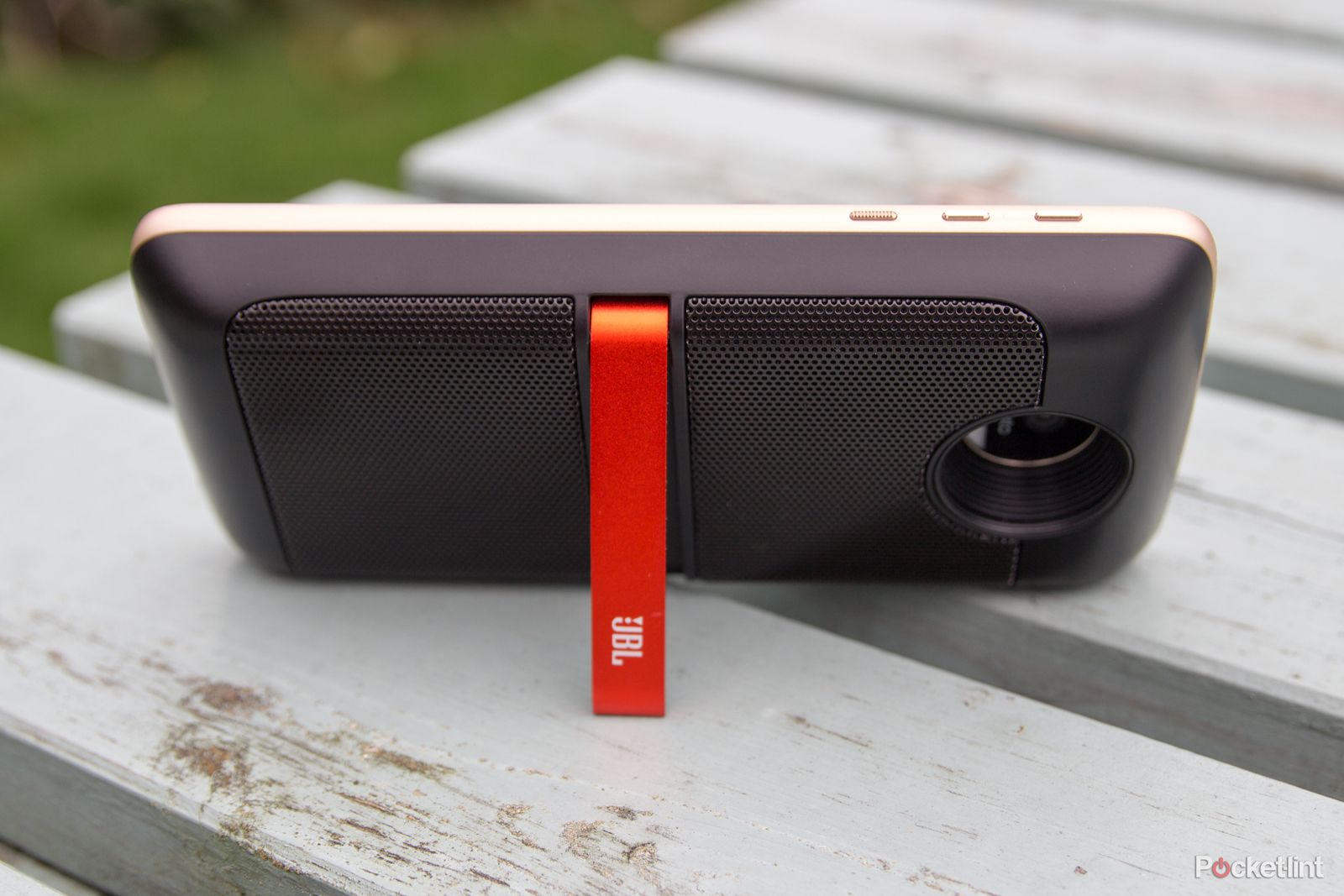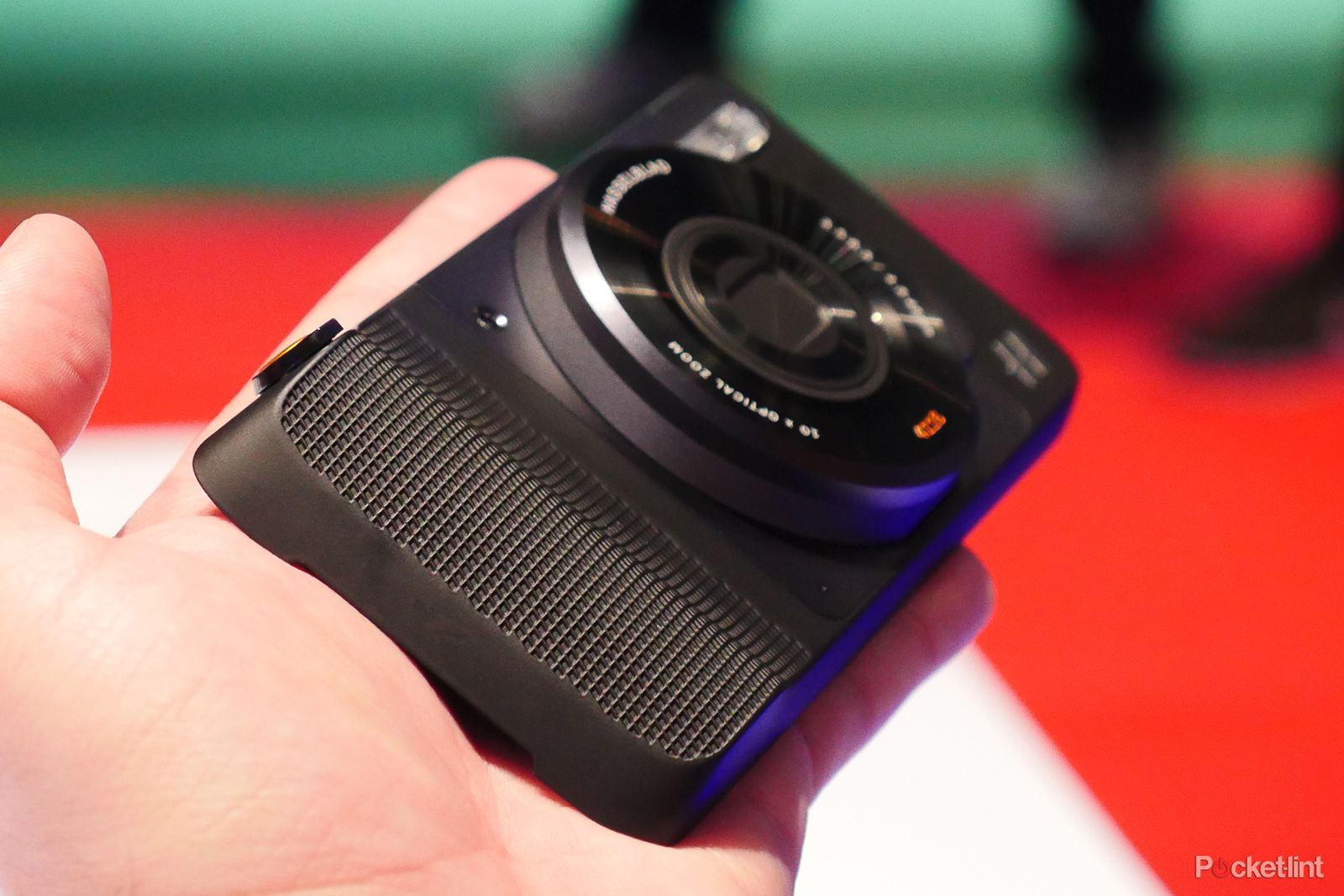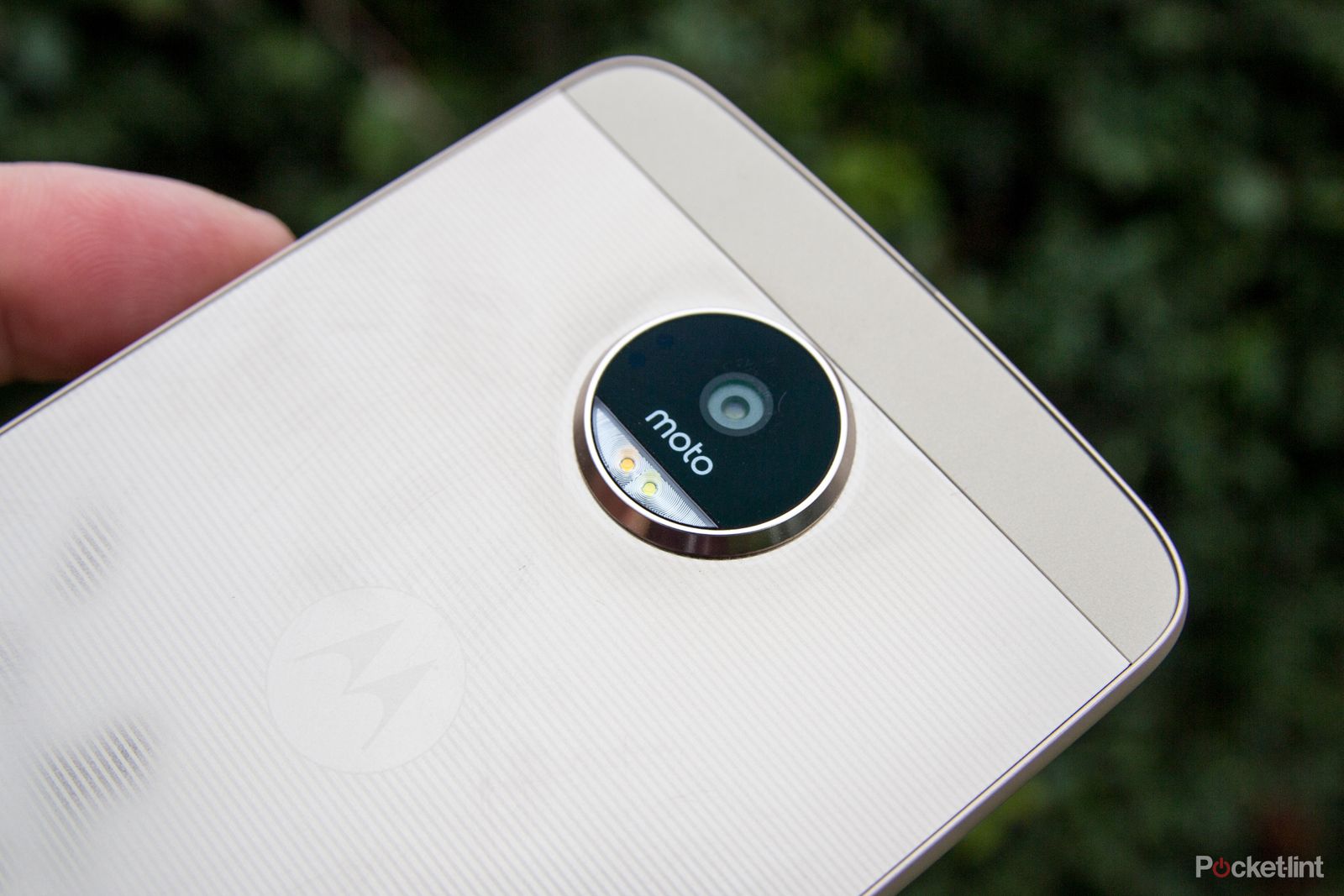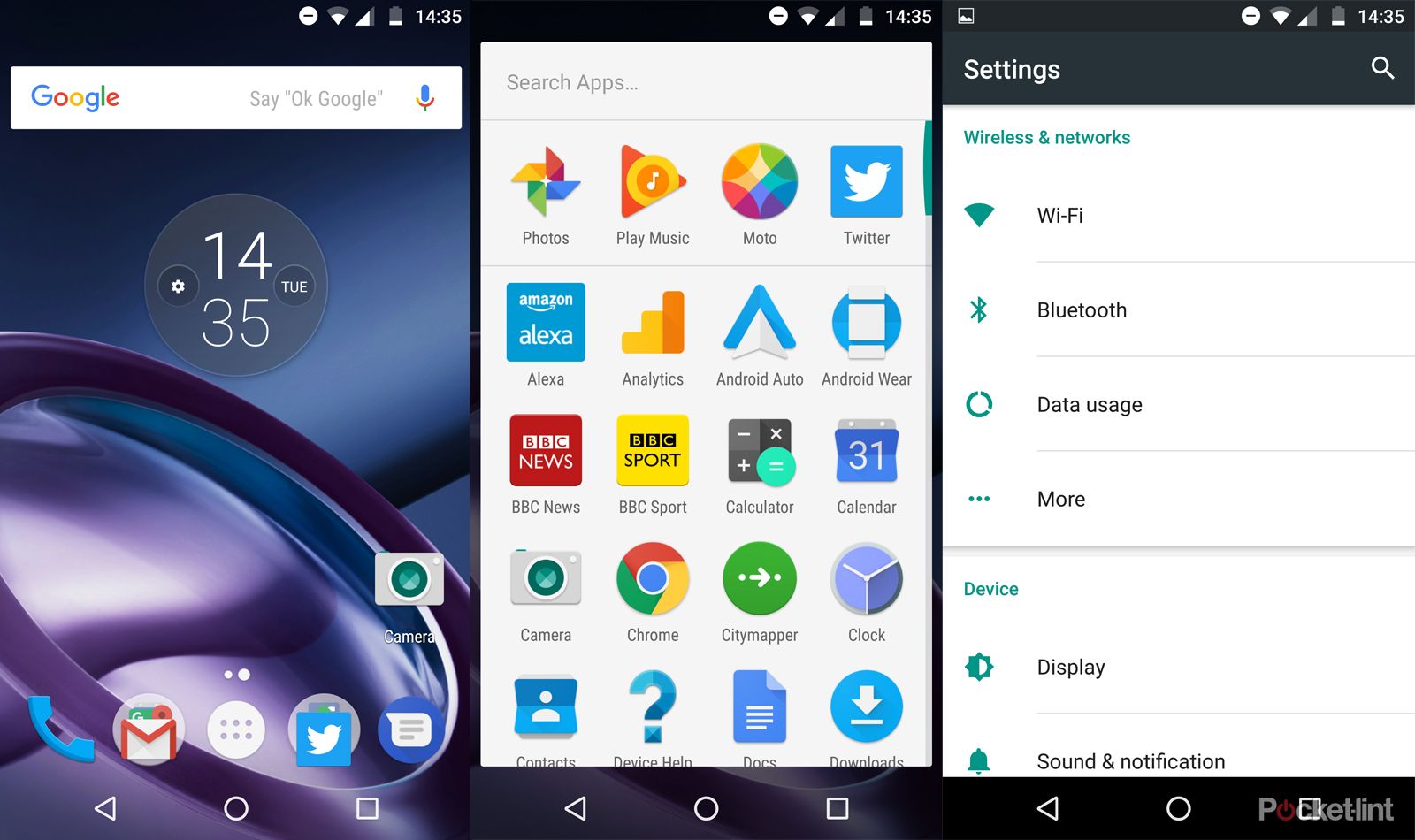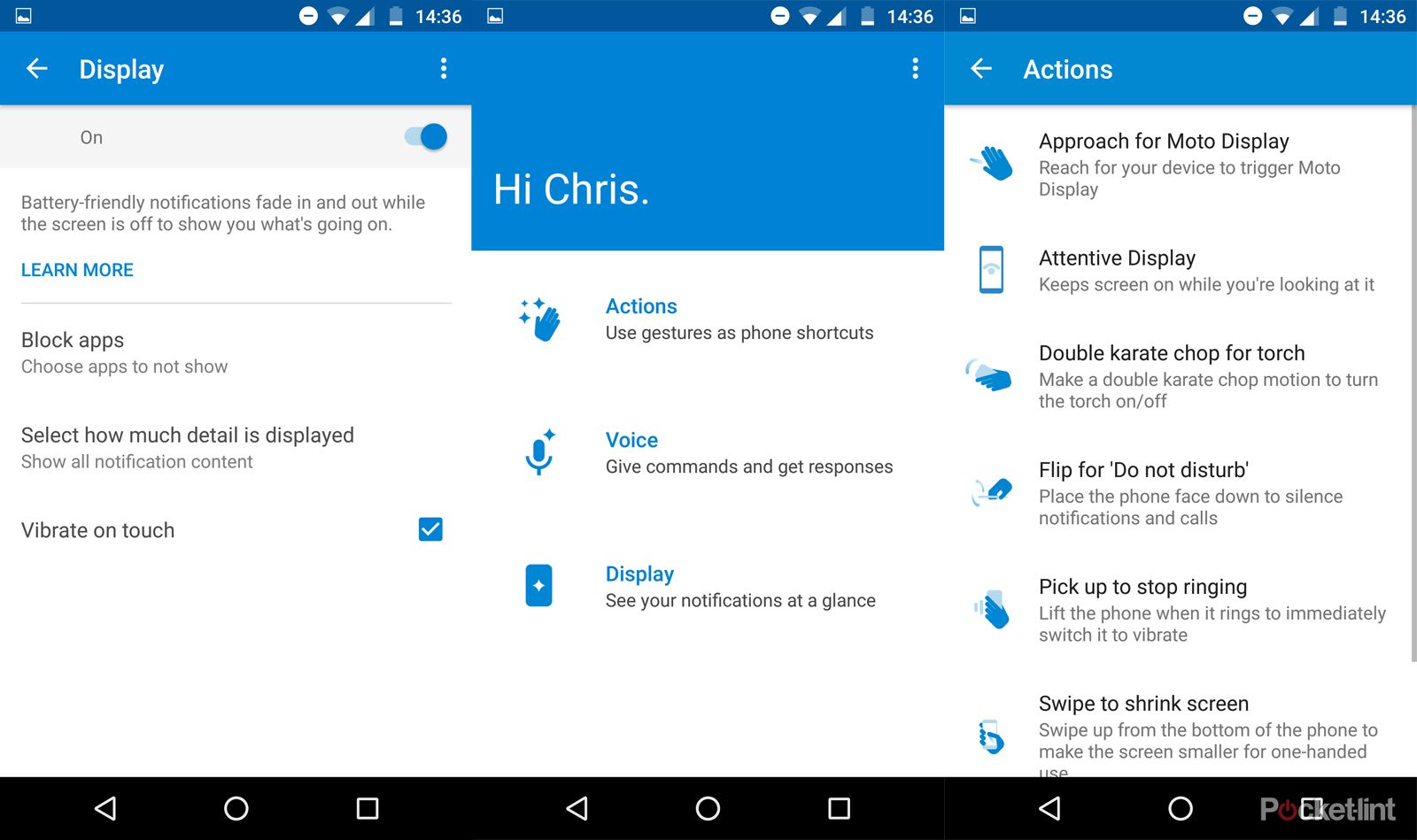Motorola has seen more than its fair share of changes in the past few years. From Motorola to Google to Lenovo, we've seen Moto phones shift to US-only manufacture and away again, introduce Moto Maker and pose in Nexus clothing.
Our quick take
The Motorola Moto Z wowed us when it was first revealed. The Moto Mods system is clever and some of the accessories are fun. But we can't help feeling that the Moto Z was compromised to make it a better modular phone. That thinness that's proclaimed doesn't result in a nice design and when you're using the phone day-to-day and Mods as a rare addition, it's compromise that you feel.
Aside from design, what you get in the Moto Z is phone that's aiming to be flagship, but doesn't quite get there. It falls short of some of the major devices of the year - it's not as exciting as the Samsung Galaxy S7 edge, it's more expensive than the OnePlus 3, and its major point of differentiation will ask you to spend more on accessories when who knows how long you'll be able to use them for?
The camera is good and the lack of bloat results in a clean handset, but lacking stellar performance and taking a hit on the battery life, the Moto Z struggles to make its case as a day to day phone, unless you're going all-in on Moto Mods.
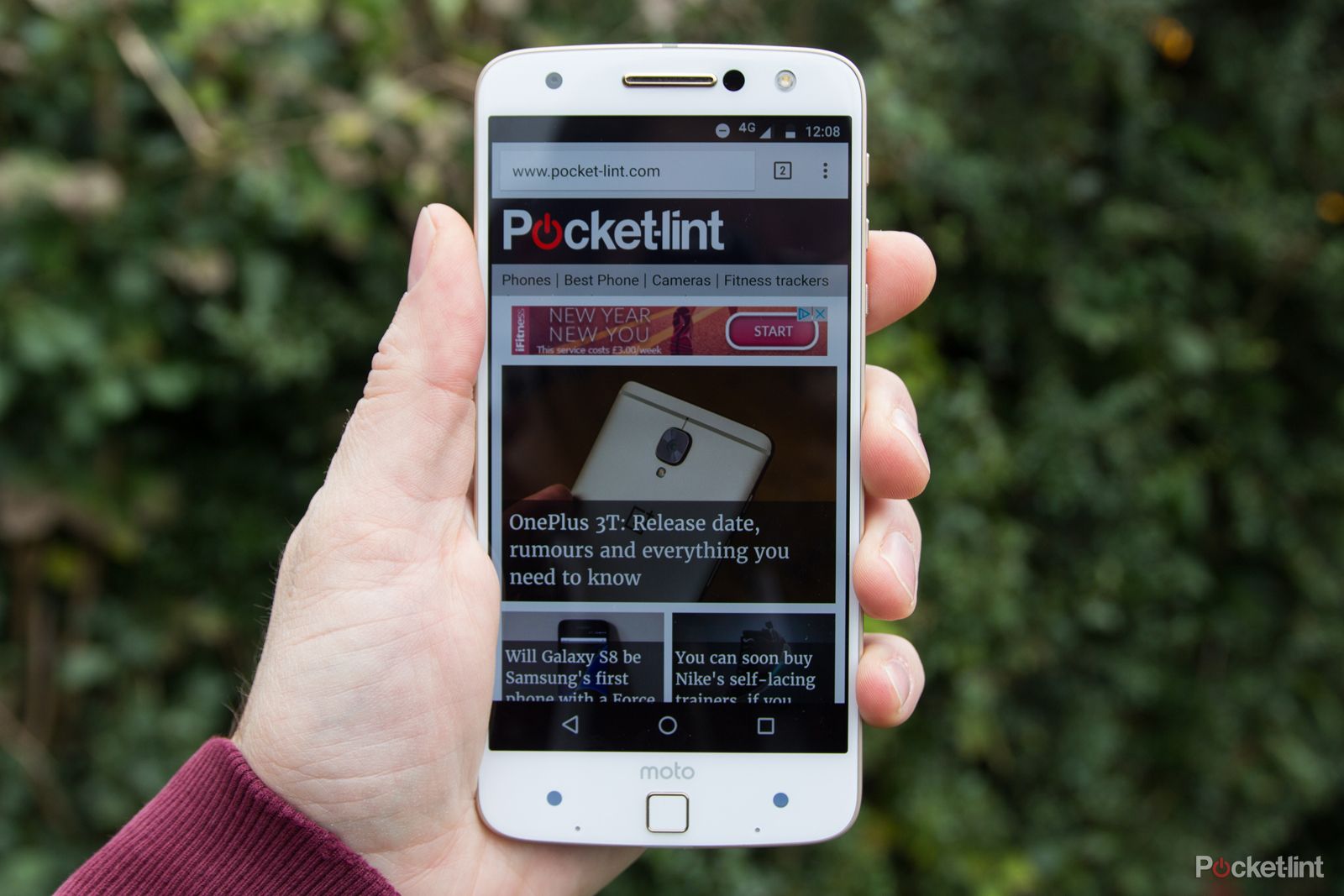
Motorola Moto Z - 3.5 / 5
| FOR | AGAINST |
|---|---|
|
|
Hasselblad True Zoom
Now firmly in the grips of Lenovo, the Moto Z - which introduces clip-on modules, called Moto Mods - is the most "Lenovo" phone we've seen from the company.
This new Z family looks to differentiate itself from the darling of the entry-level, the Moto G, and step away from the Moto X, a popular model in its own right. But with LG fumbling with its modular G5 (will its "Friends" modules be ditched in the G6?) and Google's own Project Ara cooling, is there any future in modular phones?
- Which is the best mid-range phone under £400?
- Best smartphones 2018: The best phones available to buy today
Is the Moto Z modular feature a compromise?
- 153.3 x 75.3 x 5.19mm, 136g
- Smart modular accessories
- No 3.5mm headphone socket
The Moto Z is known for being one of the thinnest phones around. Measuring only 5.19mm thick, you can certainly chalk that up as a feature if thin phones are your thing. The iPhone 7 is fat at 7.1mm, the Samsung Galaxy S7 edge morbidly obese at 7.7mm. One of the reasons that Lenovo has opted to go so thin is to reduce the bulk when you add a Moto Mod accessory.
The phone, thereby, becomes the frontispiece to something larger - a speaker, camera, projector. That's the idea, but there's a universal problem with modular phones: the phone is the most important part of the equation and any compromise made to accommodate modularity becomes a flaw you have to deal with daily.
In the case of the Moto Z, that 5.19mm thickness leads to a design that's not actually very comfortable to hold or use - unlike those fatties we just mentioned. The problem is with the metal rim that edges the phone. On the back it feels sharp: there's no organic curve into the rear of the phone or to transition from side to back, so it's uncomfortable against your fingers and gathers dirt and debris.
The Moto Z comes with a cover in the back called a Style Shell, which connects using magnets, along with a waistband you can also attach. With all in place, the phone is more comfortable and more like a regular phone again. Being able to magnetically attach a rear cover is actually a nice way to customise your phone and the Style Shells cost £16 each.
On review here is the white and fine gold Moto Z... which can only be described as ugly. The gold rear and sides are fine, although it's not a seamless design. Just as we criticised the Sony Xperia XZ, you're looking at a sectioned back with different finishes top and bottom.
But it's the front that's most offensive. The white finish doesn't work at all, because of the number of visible sensors that Moto has crammed in. These sensors are to enable the proximity feature - being able to reach out and have the phone wake as you approach it. So whatever you do, choose a Z with a black front, because the white version is a mess, with all these pockmarks and the chintzy bordering of the fingerprint sensor and speaker.
Going slim also means ditching the 3.5mm headphone socket and using USB Type-C instead. There's an adapter in the box so you can still use your headphones, although it's a bit messy having the extra dongle, as Apple iPhone 7 owners will know. The transition from 3.5mm to an alternative connector seems inevitable, whether that means buying a set of Type-C equipped headphones or switching to wireless will come down to preference.
Overall, like the LG G5, there's a feeling that the Moto Z goes too far to accommodate the accessories: that's fine if you're sold on the concept, but if you're just hunting for a good smartphone, the design doesn't really stack up.
Moto Z review: Display excellence
- 5.5-inch, 2560 x 1440 resolution (535ppi)
- AMOLED protected with Gorillla Glass 4
Lenovo has said that it doesn't really believe in small displays. And looking around, with all phones growing in size, the Moto Z fits in with its 5.5-inch display.
Not wanting to compromise on the premium position, however, the Moto Z delivers a Quad HD resolution - that's a significant 2560 x 1440 pixels, for 535ppi. That puts it up alongside other flagship phones, like the Samsung Galaxy S7 edge or Google Pixel XL.
Using an AMOLED panel the Moto Z offers deep blacks and can offer vibrant colours, although the "standard" screen mode see things a little flat. Switching to "vibrant" in the settings will make the whites a little cooler so they look brighter, while boosting the colours for more punch.
There's adaptive brightness too and we're happy this is capable in adjusting to ensure that you can see the display in all conditions.
How well does the Moto Z perform?
- Qualcomm Snapdragon 820, 4GB RAM
- 32GB storage, microSD card support
Not wanting to compromise on the hardware, it's impressive that this Moto crams in the goods to compete with the best phones out there - on paper anyway.
There's a Qualcomm Snapdragon 820 chipset with 4GB RAM. That puts it in flagship position alongside 2016's greatest handsets, only bettered by the more recent Pixel phones from Google.
There's been some international delay with the Moto Z that sees it launching in the UK four months after it appeared in the US, meaning there's newer hardware starting to appear, such as in the OnePlus 3T (which has the even speedier Snapdragon 821 chipset on board).
There is a microSD card slot for storage expansion. This sits in the same tray as the SIM card, but is hot swappable. You also have the option to provision the microSD as internal storage, using Android's adoptable storage function, meaning seamless and easy storage expansion.
With this loadout of hardware, you'd expect the Moto Z to be every bit as capable as its counterparts that offer a similar configuration. We've not found that to be the case, however. Although the Moto Z offers a fairly unfettered Android experience, it doesn't feel as quick and fast as some of the other flagship devices out there. We've encountered a number of problems, like stuttery scrolling on webpages, which more than suggests something isn't right.
That's led us to restart the phone to try to eliminate some of the performance frustrations, like never being able to find GPS on Pokemon Go (something we never managed to resolve). That might just be an isolated incidence, however, as other GPS-based apps work fine.
At the same time, we found games like Real Racing 3 played smoothly enough, just as they do on other flagship devices, so it's something of a mixed bag. Especially if webpages can't scroll smoothly.
There's a front fingerprint scanner sitting below the Moto Z's display. This is simply a touch-to-unlock implementation, enhanced with the option of long-touch to turn the display off again. That's fine, but it does feel like Moto missed a trick: this could be a home button too. Perhaps those front sensors we don't really like could be Android's other navigation buttons too?
Sadly that's not the case, so once you've unlocked your phone, you're back to onscreen controls, leaving that fingerprint scanner feeling under-utilised. We had a similar issue with the more budget Moto G Plus model: we never quite understood the fingerprint scanner's necessity at that handset's positioning.
How long does the Moto Z last per charge?
- 2,600mAh battery
- USB Type-C connector
- Turbo Power charging
Slimming a handset down ultimately means reducing bulk somewhere and 99 per cent of the time, that means squeezing down the battery capacity. The Moto Z has a 2,600mAh cell, which is a low capacity for a device of this screen size and resolution.
Motorola claims that you'll get 30 hours of use from a full charge, but we didn't get anywhere near the figure. Typically, in light use, the Moto Z will just about scrape through the day, but you'll probably have to visit the charger for a top up if it's a busy day or you plan on doing anything that's going to hit the battery harder, like playing games or listening to lots of music.
This sets it at something of a disadvantage compared to many rivals that just have more capacious batteries and last longer. You might have to pay more for the latest Samsung flagship, but it performs better too.
Arguably you could get around this by using the Incipio Moto Mod power pack accessory, but that's £60 extra and plenty of bulk, but you have to accept that going slim, means charging more often.
At least the charging is nice and fast, and there's a Turbo Power charger in the box.
What are Moto Mods? The modular experience explained
- Magnetic Moto Mod accessories
- Seamless, clip-on integration
The big play with the Moto Z is Moto Mods. Although we feel the design of the Moto Z has been compromised a little, we have to admit that the execution of these modular accessories is a lot smarter than the LG G5 (the two aren't interchangeable, just to be clear). On LG's phone you have to remove the bottom of the phone to switch it out, with the Moto you just have to use magnets to attach to the back.
Ironically, given that we're not sold on the design of the Moto Z on its own, we actually quite like the feel with an attached Mod. We've been using the JBL SoundBoost speaker and although it makes the phone a chunky lump, it feels solid and well connected.
Attach a Mod and the Moto Z automatically detects it. The software for that accessory is also handled by the phone, so when there's a firmware update, the phone takes care of it.
We've not had the chance to test all the Moto Mods, we can vouch for the JBL SoundBoost. This is a great speaker accessory, giving you enough volume and the essential uplift of bass to make this a better standalone music device or a better device for watching Netflix without the need for headphones.
The problem is that the JBL SoundBoost only works with the Moto Z and Moto Z Play. It might only cost £70, but what use is that if after 18-months, you move on from the Moto Z? You'll probably be better off buying a compact Bluetooth speaker, like the BeoPlay A1, spending a little more and knowing that you've get better performance and enduring compatibility in the future.
We've also previewed the Hasselblad camera accessory. This basically turns your phone into a compact camera, with 10x optical zoom, but you have to pay £199 for the privilege. It's not that great a camera either.
That's the problem with the Moto Mods concept at a basic level: it assumes that you want to spend more to accessorise one phone. Avoiding the Mods and staying conventional means your accessories will work with other devices in the future.
Is the Moto Z camera any good?
- 13-megapixel, 1.12µm, f/1.8, OIS rear camera
- 5-megapixel, 1.4µm, f/2.2, front camera with flash
One of our favourite shortcuts has been included on the Moto Z: a double-press of the power button to launch the camera. It's a standard Android feature often lost on non-Google devices and here Motorola dresses it up as a Moto customisation.
We've mentioned that the camera sits in a bump on the rear, but that's probably because it packs in optical image stabilisation. It's a 13-megapixel sensor with 1.12µm pixels. Manufacturers have started including the pixel size recently, with larger pixels being the play - the Google Pixel is 1.55µm, the S7 edge is 1.4µm - so we're not sure that Moto has much to shout about here.
There's a f/1.8 aperture lens, laser focusing and the promise of zero shutter lag, along with a dual tone flash. In a rarer arrangement, the front camera gets itself 1.4µm pixels and a flash too, resulting in a selfie camera that's skilled in lots of areas, dark or light, giving plenty of detail. There's also a beauty mode for those wanting a little digital boost.
The rear camera is competent, but doesn't really raise itself to being hugely impressive. The app is a little fiddly, mostly wanting to keep things in auto, but offering some more advanced features.
One of the automatic features will allow you to press-and-hold the shutter to take burst shots - meaning you can catch that perfect moment when something is moving. It works well. There's automatic HDR (high dynamic range) which works all the time too.
In lower light the camera is a little more hit and miss, with a tendency to boost the ISO to a level where there's a lot of image noise. That gives you those low-light shots, but sacrifices sharpness and detail in the process. That's pretty common in smartphones, and the Moto Z doesn't quite have the wow factor that the best phones of the 2016 offer.
There's the option to change the focus point by tapping on the display, but this also offers metering tweaks. That's good, to a point, allowing you to quickly change the exposure compensation if it doesn't look right. However, once you take a photo it sticks to that manual focusing point, rather than shifting back to automatic - so it's a faff to get back to regular shooting, without focus sticking to that corner you manually picked previously.
For those wanting more control there's professional mode to give a wide range of useful controls, like focus, ISO sensitivity and shutter speed - the last of which so you can take longer exposures up to two seconds for nighttime exposures (if the camera is steady, anyway).
For video fans, there's 4K capture at 30fps, with 1080p video offered at both 30fps and 60fps. There's also the option of slow-motion capture from the camera, which like the Google Pixel and the iPhone, gives you easy-to-use sliders to change the speed of different sections.
Overall, the Moto Z camera is good rather than exceptional. It offers a lot, but doesn't really challenge those devices that have pushed camera performance in 2016. At the same time, this is a handset that's around £150 cheaper, so in that respect, it's good performance for the money.
Moto Z review: Simple software
Motorola ditched the bulk of its software a few years ago and its devices have been all the better for it. The Moto Z arrives with Android Marshmallow and feels very much like a stock Android device. There are only a few tweaks and customisations and those accommodate the Moto Mods and some of Moto's additional gestures - like "twist" to change cameras, or "chop" to turn on the torch.
There's also Moto Display, a feature similar to what's become common across many devices recently. Here you can choose what to show on the Moto Z's lockscreen without waking the device, with the option to hide specific apps, or hide sensitive information.
When we talked about the design we didn't pull any punches dissing those front sensors, but in practice they actually become useful: you don't need to touch the phone, you can just move your hand near it and the screen will wake to show you the time and notifications. It's clever as a feature, we just think that the design execution on the white finish phone should have taken aesthetics into account.
Aside from those points, the Moto Z is served by Google's standard Android apps. Launching on Marshmallow, there's no sign of Android Nougat (at the time of writing), so being a pure Android handset doesn't seem to offer the promise of upgrades faster than anyone else.
Hasselblad True Zoom
To recap
The Moto Z makes design compromises to allow for Moto Mods. They might be fun, but the day-to-day experience ends up compromised as a result. If you're sold on the modular concept, then this is almost flagship performance, at almost flagship price.

